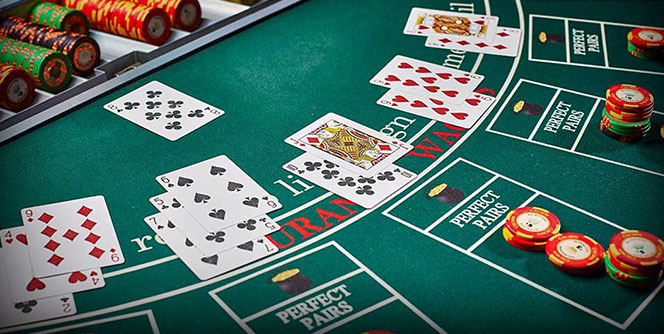Roulette is one of the oldest and most popular mass-played casino games. By combining simplicity with excitement, roulette achieves everything a player expects to get from gambling. There is speed, adrenaline, a chance to win big – all that in a simple and straightforward game that can be learned in a few minutes.
Thanks to roulette’s popularity, people have, for decades, tried to come up with strategies to beat the game. We’ve seen many, many ideas and propositions on what to do to win at roulette. However, none of these seem to be able to overcome the inherent house edge. So, in this article, I’ll talk about some of the most popular roulette betting strategies – and reasons why these won’t make you money in the long run.
The One We All Know: Martingale
Anyone who’s ever been interested in roulette betting strategies is familiar with Martingale. The idea of the strategy is very simple:
- Bet an amount on even odds (red/black, even/odd)
- If you lose, double the amount on the same bet
- Repeat the process until you win
- Start from scratch
So, for example, you start betting with $1 on black. If you lose, you increase your bet to $2 on the next spin, betting on black again. If you lose, you bet $4, etc. So, you keep doubling your bets until finally the ball lands on black. When this happens, you’ll be up the initial amount ($1 in this case) – and you can start again.
Sounds simple enough, right? It also sounds like you can’t really lose – which is why so many people fall victim to the Martingale. So, let’s talk about some important points.
Unlikely Doesn’t Equal Impossible
The first premise of the Martingale is that, eventually, your bet must come in. Often, you’ll see people explaining how unlikely it is for the roulette ball to land on red or black eight or ten times in a row. And they aren’t lying – these events are very unlikely.
But they aren’t impossible, and I’ve seen streaks like this time and time again.
Short-term, you’re not very likely to experience this kind of run, which is exactly why so many people start believing that the Martingale can actually make them winners. However, keep playing for long enough, and the run you never thought possible is going to come. You’ll see 12 red numbers come in one after another while you’re betting on black.
Risk vs. Reward: It Doesn’t Compute
The issue of unpredictability isn’t the only problem with the Martingale. Let’s look into our above example, where you’re starting with $1. If you’ve reached the 10
th spin, you’ll need to risk $512 to win a measly $1 (your initial bet). Lose again, and that amount now increases to $1,024.
The question now becomes whether you’re someone who can really risk more than a grand to potentially win $1. And if you are, is it really worth your time to play in this way? The risk vs. reward ratio, which is always at the heart of any gamble, simply doesn’t fit.
And Finally: The Betting Limit
There is one thing that Martingale proponents never seem to talk about, and that’s the dreaded table betting limit. Let’s say that all above considerations are irrelevant, and that you’re someone willing to bet $10,000+ to win $1. The problem is, most casinos won’t let you increase your bets indefinitely.
So, if you reach the maximum betting limit, you’ll be stuck. You’ll need to bet $5,000 or more to continue the progression, but you won’t be allowed to. Today, with all sorts of
online casinos and really wide betting spreads, there are more options, but casinos won’t really let you do whatever you want, either.
If you sign up to an online casino exclusively to try and play using the Martingale, the odds are, they’ll quickly catch up and refuse you their services. So, even if you somehow found the way around all other hurdles, no casino will let you abuse their favorable conditions.
So, the most popular of all roulette betting strategies, the Martingale, fails at multiple levels. You won’t win any money using it in the long run.
The Fibonacci System: A Conservative Martingale
Another popular roulette betting strategy, the Fibonacci system applies logic similar to the Martingale, but it limits a player’s risk somewhat more. The system works based on the Fibonacci sequence:
- Start by betting $1 (even odds bets: red/black, odd/even)
- If you lose, your next bet is the sum of the previous two bets
- So, the second bet is $2, the third bet is $3, then $5, etc.
- If you win, move two steps to the left (from $5 to $2)
In essence, the principle is the same as with the Martingale, but you’ll have more chances to hit your bet. At the same time, your potential winnings are more limited as well, as you can only win the amount of the previous two bets. The idea is to get back to your starting point, where you’ll finally make profit.
While it is less risky, the Fibonacci fails to deliver for same reasons as the Martingale. Unlikely streaks do happen, there are table limits preventing you from placing wagers beyond a certain point, and the risk vs. reward ratio just isn’t there. In fact, with the Fibonacci, it can be extremely annoying because you’ll be moving back and forth, all to get back to that starting point.
The starting point usually needs to be quite low with both systems (Fibonacci and Martingale) simply because if you start high, you’ll quickly reach the maximum bet limit. You need to give yourself a good amount of spins if you want to stand a chance at all – and even then, you aren’t beating the house. You’re simply making your bankroll last longer.
So, despite its fancy name and seemingly impressive math principles, the Fibonacci is another roulette betting strategy that doesn’t deliver. It can be a good way to have some fun and have some winning sessions because it should give you a fair amount of spins, but don’t expect it to make you money. It just won’t.
Paroli: A Roulette Betting Strategy with No Strategy
The Paroli system is often mentioned as another roulette betting strategy, although there is nothing strategic about it. The whole idea revolves around gambling it up when you’re winning and hoping for a lucky streak.
- Start with a certain amount ($2 for example)
- Bet it on whatever you like (even odds bets, columns, numbers)
- If you lose, bet the same amount again
- If you win, take the original amount and the win and bet again
- Repeat if you win; start with $2 again if you lose
So, Paroli suggests an aggressive approach to roulette, where you use all of your wins to bet again. The idea is that if you happen to lose, you’re only losing the original amount ($2). Everything else is your “winnings,” suggesting that, somehow, this isn’t your money.
There is one big problem with this strategy, and it actually touches on the gambler’s psychology in general. Any money you win during your play is yours. Just because it is paid out in chips or shown as a number on the screen, that doesn’t make it any less real than the cash you have in your wallet or sitting in your bank account.
So, if you’re using your winnings, you’re effectively using your own cash. It doesn’t matter that you haven’t had a chance to move it to your bank account yet or if you haven’t cashed in those chips. That is your money that you can put in your pocket and walk away with whenever you feel like it.
It is true that the Paroli can help you have more big winning sessions because of the aggressive progression, but it is also true that you’ll often end up placing many initial bets without ever really going on a good run. So, after a while, the casino will realize its edge, even if you manage to have a few good sessions in the meantime.
Other Roulette Betting Strategies
As mentioned, there are dozens of different roulette betting strategies, but all of them operate on similar principles of increasing or decreasing bets, relying on probabilities, and preaching how unlikely certain roulette events are. However, as we’ve explained, unlikely doesn’t mean impossible, and given enough attempts, unlikely becomes quite realistic.
So, whether you pick one of the roulette strategies described here or go for a different one, the result will always be the same. The house maintains an edge of 2.7%, and there is no strategy that can change that number. In the long run, the player will always lose 2.7 cents for $1 wagered.
Conclusion: Is There a Point to Using Roulette Betting Strategies?
Clearly, roulette betting strategies don’t work in the way some people try to represent them, and there are no actual winning strategies out there. It is a gambling game with a fixed house edge. Whatever you do, the edge remains unchanged.
But this doesn’t mean that roulette strategies don’t have an application. The Martingale, for example, can be a fun way to make some money in a short run. While there is no guarantee, if you start with low bets and don’t mind putting in enough time, you are likely to make a bit of money before the really bad streak comes in. The real trick is knowing when to stop, but there is no universal answer to that.
Furthermore, playing with a strategy can be a lot of fun. Because you have a clear plan of action, you’ll be able to set certain goals, which makes playing roulette even more entertaining.
Some of the strategies can also help you establish better bankroll management and increase your winning chances. You are still not guaranteed to win, of course, but a well-devised strategy will give you more shots than placing mindless bets all over the place.
So, in the end, if you fancy the roulette betting strategies described here or anywhere else, there is no downside to giving them a go. In fact, they can be beneficial for reasons I’ve just explained. The important thing is to stay aware that no strategy will make you a winner, so never risk more than you can afford to lose!






Leave a Reply